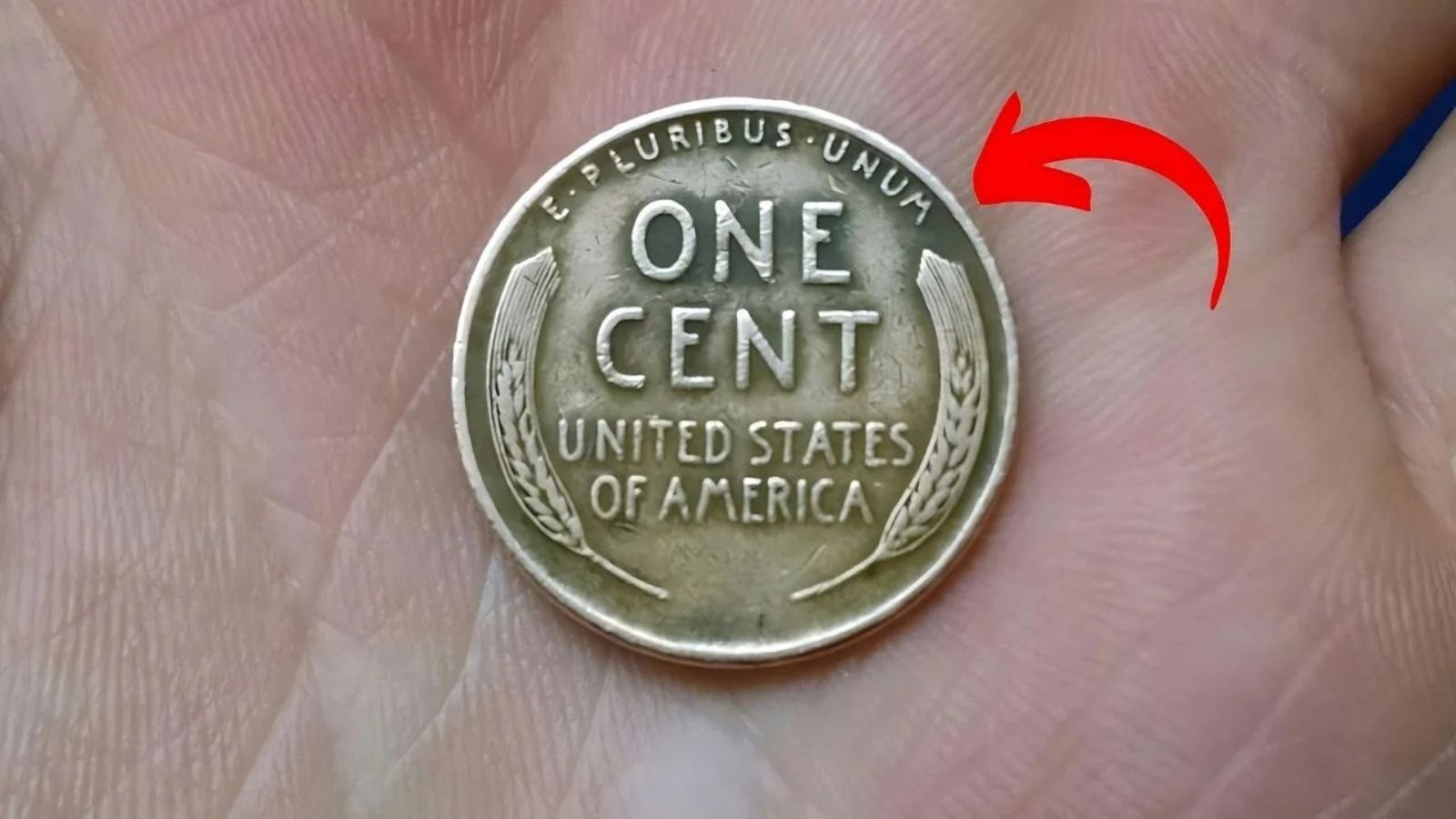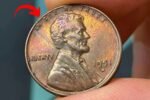In the fascinating world of coin collecting, some pieces transcend their humble origins to become the stuff of legends. Among these legendary coins, the Lincoln Wheat Penny holds a special place—particularly the ultra-rare 1943 bronze version, which has astonished collectors and experts alike with its jaw-dropping $80 million valuation. What makes this coin so incredibly valuable? How did it come to be? And is there a chance it might still be hiding in someone’s forgotten coin jar?
Let’s dive deep into the story of the rarest Lincoln Wheat Penny ever minted and explore the reasons behind its legendary status.
How One Kennedy Half Dollar Coin Became More Valuable Than a 1-Ounce Gold Bar
The Accidental Treasure: How the $80 Million Penny Came to Exist
To understand the rarity of this coin, we must go back to 1943. At the height of World War II, copper was in high demand for the war effort. The U.S. Mint, seeking to conserve copper for military applications, made a historic decision: pennies would be struck in zinc-coated steel instead of their usual bronze (95% copper and 5% tin and zinc) composition. This change led to the production of hundreds of millions of 1943 steel pennies.
However, in what many experts believe was a simple error, a few bronze planchets—those leftover from the 1942 production run—were accidentally fed into the coin presses. The result? A tiny handful of 1943 Lincoln Wheat Pennies were struck in bronze instead of steel.
How many were made this way? Only 10 to 15 genuine 1943 bronze Lincoln Wheat Pennies are known to exist today. Their rarity, combined with the extraordinary circumstances of their creation, has elevated them to mythic status in the numismatic community.
Why Is This One Lincoln Wheat Penny Worth $80 Million?
While the story behind this error is fascinating on its own, several critical factors contribute to the astronomical value of a single bronze Lincoln Wheat Penny from 1943:
-
Rarity: With only a handful in existence, it is one of the rarest coins ever accidentally minted in U.S. history.
-
Historical Context: The coin is a direct artifact of World War II-era policies and decisions, giving it a unique place in American history.
-
Condition: The specific coin appraised at $80 million is in pristine condition, certified by top-tier grading services. The better the condition, the higher the value.
-
Collector Demand: The Lincoln Wheat Penny is already one of the most beloved coin series in U.S. numismatics. Adding extreme rarity into the mix creates tremendous demand.
-
Mystery and Intrigue: Part of the coin’s allure is the romantic notion that one of these ultra-rare pennies could still be in circulation. That possibility has fueled decades of searching and speculation.
Could One Be Sitting in Your Coin Jar?
While the odds are slim—exceptionally slim—it is not entirely impossible. There have been documented cases of rare coins being found in the most ordinary of places. If you happen to come across a 1943 Lincoln Wheat Penny that doesn’t stick to a magnet (more on that below), you might just be holding a fortune in your hand.
Even more compelling is the idea that these pennies may still exist unnoticed in inherited coin collections, old piggy banks, or dusty jars of change. History has shown us that extraordinary coin finds can and do happen in the most unexpected ways.
Real-Life Discoveries: When Everyday People Strike Gold
Here are some incredible real-world stories that prove valuable coins can surface where you least expect them:
| Year Found | Where Found | Estimated Value | Current Status |
|---|---|---|---|
| 1958 | In a teenager’s pocket change | $40,000 (at the time) | Sold to a private collector |
| 2006 | Among inherited coins from a relative | Over $1 million | Auctioned in 2019 |
| 2010 | Found in a roll of pennies from a bank | $200,000+ | Held in a private collection |
These cases underscore one important truth: while rare, valuable coins like the 1943 bronze Lincoln Wheat Penny do occasionally surface—and sometimes in the hands of people who had no idea what they possessed.
How to Identify a 1943 Bronze Lincoln Wheat Penny
If you think you might have stumbled across one of these mythical coins, here’s how to evaluate it:
-
Material Check: Use a magnet. A steel penny will stick; a bronze one will not. This is the quickest and easiest first test.
-
Color Examination: Steel pennies from 1943 are a silver-gray color. A bronze penny will have a distinct reddish-brown or copper hue.
-
Weight Check: Steel pennies weigh about 2.7 grams, while bronze pennies weigh approximately 3.11 grams. A digital scale can help verify this.
-
Professional Grading: If your penny passes these tests, the next step is to have it authenticated by a professional grading service like PCGS (Professional Coin Grading Service) or NGC (Numismatic Guaranty Company).
What to Do If You Think You’ve Found a Rare Lincoln Wheat Penny
-
Handle It Carefully: Rare coins should never be cleaned, as this can significantly reduce their value. Always handle by the edges and consider wearing gloves.
-
Store It Properly: Place the coin in a non-PVC holder or a coin flip to prevent damage from air, moisture, and contaminants.
-
Seek Expert Guidance: Contact a reputable coin dealer or numismatic society for a professional opinion before making any decisions.
-
Get It Certified: A coin is only as valuable as its authenticity and grade. Certification by PCGS or NGC is essential to establishing its legitimacy and market value.
The Legacy of the Lincoln Wheat Penny
Even without the legendary 1943 bronze error, the Lincoln Wheat Penny is one of the most collected coins in American history. First minted in 1909 to commemorate the 100th anniversary of Abraham Lincoln’s birth, the Wheat Penny series ran until 1958 and became a staple of everyday commerce.
Collectors are drawn not just to the Wheat Penny’s beautiful design but also to the many variations, mint errors, and historical context behind each year and mint mark. From doubled dies to mis-strikes, the series offers endless opportunities for discovery.
However, the 1943 bronze version stands above all others—an accident that became an icon. The possibility that one might still be hiding somewhere keeps the dream alive for collectors and casual enthusiasts alike.
FAQs About the $80 Million Lincoln Wheat Penny
Q1: Why is a Lincoln Wheat Penny worth $80 million?
This astronomical value is due to a perfect combination of extreme rarity, historical context, condition, and collector demand. The 1943 bronze Lincoln Wheat Penny is a once-in-a-lifetime numismatic treasure.
Q2: How can I tell if my 1943 penny is made of bronze or steel?
Use a magnet! Steel pennies are magnetic; bronze pennies are not. You can also observe the color—steel is grayish, while bronze has a reddish tint.
Q3: Could one still be in circulation today?
Though very unlikely, it is still possible. Similar coins have turned up in collections, change jars, or even bank rolls. That’s what keeps the hunt alive.
Q4: What should I do if I think I have a rare penny?
Do not clean it. Handle it with care, store it safely, and have it evaluated by a professional grading service.
Final Thoughts
The 1943 bronze Lincoln Wheat Penny is more than just a coin—it’s a symbol of how history, human error, and time can collide to create something truly extraordinary. Though originally struck by mistake, its rarity and value have earned it a permanent place in the pantheon of great American coinage.
Whether you’re a seasoned collector or just someone who occasionally sorts through pocket change, the legend of the $80 million Lincoln Wheat Penny serves as a compelling reminder: the next great numismatic discovery could be waiting right under your nose.
So, check your jars, examine your rolls, and keep your eyes open—you never know when you might stumble upon a small piece of copper worth more than its weight in gold.
Some Important Link
| Telegram Group | Click Here |
| WhatsApp Group | Click Here |
| Home Page | Click Here |














